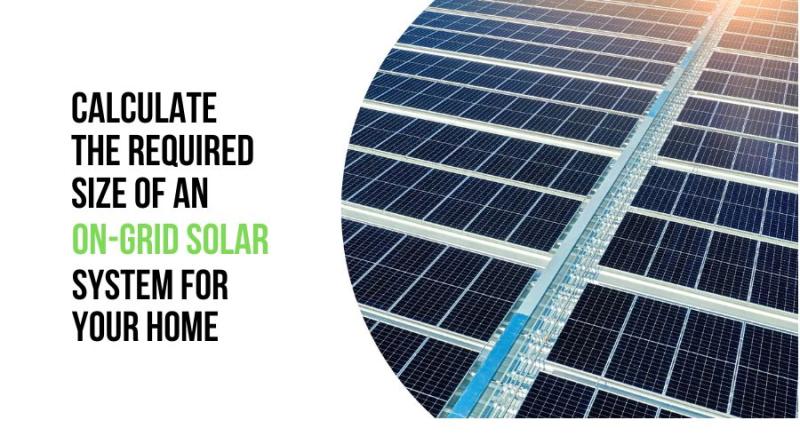How to Calculate the Size of an On-Grid Solar System for Your Home by Yourself

Switching to solar energy is a smart move, both for saving on electricity bills and reducing your carbon footprint. If you're considering an on-grid solar system for your home, knowing the right size is crucial to meet your energy needs efficiently. But how do you calculate the correct size of an on-grid solar system? Don’t worry—you can easily do it on your own! In this article, we'll walk you through the steps to calculate the perfect solar system size for your home.
What is an On-Grid Solar System?
An on-grid solar system is a solar power setup that is connected to the public electricity grid. It generates electricity from solar panels and supplies excess energy back to the grid when production exceeds consumption. When your solar system doesn’t generate enough energy, like during the night or cloudy days, the grid supplies the shortfall. This type of solar system is perfect for reducing electricity bills without worrying about energy storage like batteries.
Step-by-Step Guide to Calculate the Size of an On-Grid Solar System
1. Understand Your Energy Consumption
The first step in determining the size of your on-grid solar system for home is understanding how much energy your household consumes.
- Check your electricity bill: Look for your monthly or yearly consumption in kilowatt-hours (kWh). This will give you an idea of how much energy you need to produce to offset your electricity bills. Most bills show your usage over time, so calculate your average monthly consumption.
- Estimate your daily consumption: Divide your monthly consumption by 30 to get a rough estimate of how much energy you use daily.
For example, if your average monthly usage is 300 kWh, your daily usage is around 10 kWh per day.
2. Evaluate Available Sunlight Hours
Solar panels generate electricity depending on the amount of sunlight they receive. The more sunlight, the more energy your solar system will produce. On average, India receives about 4 to 5 hours of peak sunlight per day, though this varies by region.
3. Calculate Solar System Size
Now that you know your energy needs and the amount of sunlight available, you can calculate the size of the solar panels system required to meet your daily energy consumption.
To estimate the size of your on-grid solar system, divide your daily energy usage (in kWh) by the average sunlight hours per day. For example:
- If your home uses 10 kWh per day and you get 5 hours of sunlight, the calculation would be:
So, in this case, a 2 kW on-grid solar system would be required to generate enough power to cover your energy needs.
4. Factor in System Efficiency
Solar panels don't operate at 100% efficiency. Factors like dust, weather conditions, and panel angle affect their performance. To account for this, it's safe to add about 20-30% to your calculated solar system size.
For example, if you need a 2 kW system, consider installing a 2.4 kW system to ensure consistent energy production throughout the year.
5. Determine the Number of Solar Panels
Once you know the size of the system, the next step is to figure out how many solar panels you'll need. The number of panels depends on the wattage of the individual panels, which typically range between 300W to 450W per panel.
If you're installing a 2.4 kW system and you're using 400W solar panels:
So, you would need 6 solar panels for a 2.4 kW on-grid solar system.
Conclusion
Calculating the size of an on-grid solar system for your home is simpler than it seems. By understanding your energy consumption, factoring in sunlight hours, and considering efficiency, you can easily determine the right solar system size. Whether you're looking to reduce your electricity bills or make your home more eco-friendly, investing in a solar panels system is a great way to achieve both. Use this guide to size your system and start harnessing the power of the sun!
Post Your Ad Here

Comments